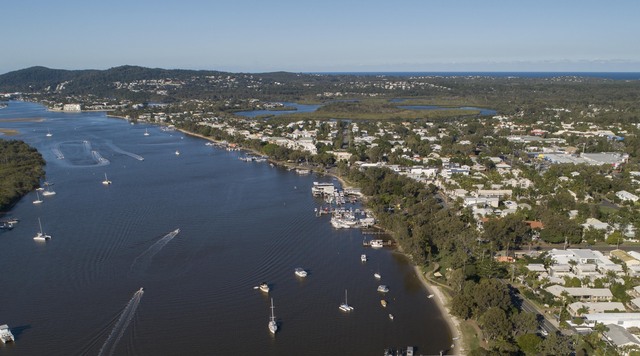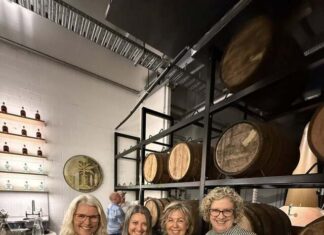The draft Noosaville Foreshore Master Plan which is open for community consultation until 7 July includes a parking strategy that proposes the conversion of some existing parking spaces to open space.
The plan which notes a reduction in car parking spaces from 404 to 301 identifies as alternatives “existing parking” in Robert Street Road Reserve, “central parking” in Mary and Gibson streets and “new parking opportunities” in Wallace Drive car park and Eumundi Road Reserves 01 and 02.
At Council’s Ordinary Meeting last week 81-year-old Shirley Nocente, who has been a Noosa resident since 1969 and enjoys visits to the Noosa River waterfront weekly and at other times for picnics and BBQs with family, why Council was “limiting residents’ access to the river by taking away over 100 riverside car parks”.
A response prepared by Council stated:
“Council welcomes diverse views from the community as part of the consultation program for the Draft plan to help set the optimal direction for this cherished foreshore and will certainly consider these views as part of its final deliberations. A key consideration is the opportunity to create more green space along the beautiful water edge for community enjoyment, which it can achieve through relocation of carparking spaces from the foreshore, to other nearby locations. The Draft Master Plan proposed several locations to relocation of carparking spaces, but it is noted that drop off areas and disabled carparking spaces will need to be provided. In terms of the broader Noosa Council program about carparking management, Council is committed to encouraging all residents and visitors to embrace public and active transport to reduce congestion as part of its endorsed Transportation Strategy, rather than trying to accommodate peak time carparking demand, which would be at the loss of open space and further exacerbate traffic congestion. Council is also committed to ensuring all our foreshores and public spaces are also as attractive as possible as part of our Noosa character and experience which is coveted by residents and visitors.
Ms Nocente who lived opposite the Lions Park in Noosaville during the 1970s, asked why Noosa Council plans “to forever ruin the feel and soul of this special place, our beloved Noosaville foreshore, with its overly elaborate plans, including fake sand dunes that will take up valuable picnic areas and separate the grass and river bank spaces, making it impossible for parents to keep an eye of their kids?” “Doesn’t the Council believe that our Noosaville foreshore is beautiful as it is and only requires the lightest touch?” she asked.
In their response Council said all views would be considered as part of consultation and stated:
“A key challenge for the foreshore is increasing erosion and tidal inundation arising from climate change. Early feedback from the community sought nature based solutions to enhance the parklands and the Draft plan proposes naturalised coastal protection barriers such as low sand mounds and living sea walls to help protect the public areas of the foreshore from erosion in the future, where as “do nothing” increases the risk of loss of this valuable community space. Council already undertakes sand nourishment along the foreshore to halt erosion and this is an extension of this program. The draft plan also proposes wide beaches, lookout points and improved graded entries to the beach areas to maximise access. Low planting is proposed on the low sand mounds to maintain visibility and provide resilience to the river’s edge. In terms of foreshore planning, it is noted that the current landscaping, pathways, beach shelters and seating walls, now so valued and accepted by the community, were established by Council 25 years ago as part of an infrastructure planning process. It’s hard to imagine the foreshore now without these facilities. It is timely for Council to plan for the future that help manage coastal and tidal issues, plan for more green space for community use, plan for new and replacement toilets, playgrounds and shelters, as well as locate wider paths that better manage the significant number of residents and visitors now using the foreshore.”







